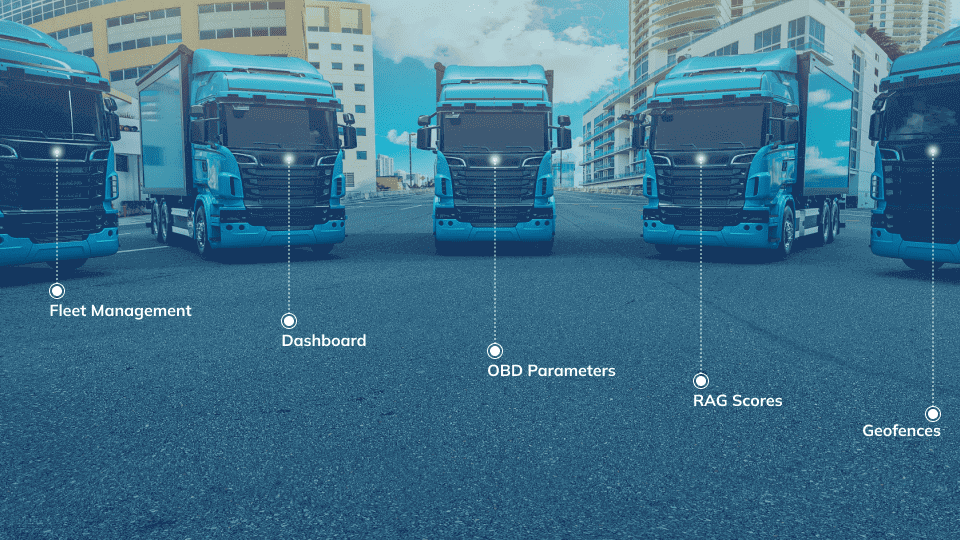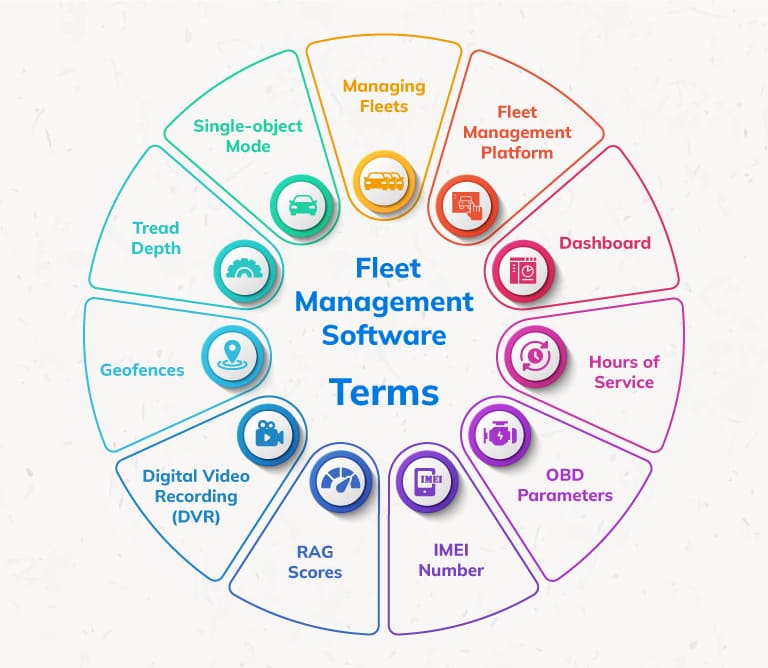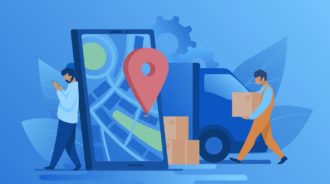
1. Fleet Management (FM)
It refers to the process of accessing vehicle-related information in real-time and reacting to it. Knowing where your fleet is, how soon it will arrive at its destination, how fast are your drivers going, and what’s causing a delay?
Fleet management is all about remote surveillance, revaluation, and reaction. For example, on receiving intelligence about a vehicle accident, you contact the driver and dispatch another fleet to complete the delivery—and that is fleet management for you! You notice one of your vehicles running low on fuel and send details to the nearest refueling station to your driver—that’s fleet management for you!
2. Fleet Management Platform (FM platform)
Any software application that allows you to perform fleet management is a fleet management platform. These differ from simple GPS tracking systems that just give you vehicle location and speed. Fleet management platforms, on the other hand, are comprehensive and depend on telemetry data. It allows you to gain visibility across your entire fleet business and supply chain.
Lets you record and access data that matters. They also help with vehicle dispatching, monitoring ETAs, scheduling, vehicle health management, and expense management. They
- Tell you where your fleet is
- Notify you when your fleet moves
- Send alerts when your driver runs a red light
- Records hours of service (see below)
- Notify you when your driver is running late
- And remind you of due maintenance needs when your driver is back.
Fleet management platforms are everything GPS tracking systems are, and so much more.

3. Fleet Management Dashboard
The first screen of any good fleet management platform, a dashboard, is an analytic tool that lets you review fleet-related data intuitively. A dashboard helps you scan through data quickly so you can respond to emergencies in real time. The dashboard includes a variety of widgets that give you a bird’s-eye view of your organization.
With a single glance, you can figure out the driver with the most violations, possible delays, or the status of your fleet’s engine. The dashboard gives you the freedom to customize analytics so you can make the most of it. Color-coded dashboards charts and re-sizeable graphical widgets help you comprehend data quickly.
In the truest sense, a dashboard is a timesaving tool that can reap huge profits.
4. Fleet Management Hours of Service (HOS)
Are the permissible number of hours that your drivers can spend behind the wheel (on the driver’s seat). Most accidents happen due to long, unmonitored driving hours; hence, it is important to give your drivers the necessary breaks. FM platforms help you monitor HOS by recording the engine hours of a vehicle or equipment (one of the most important OBD parameters). So, you exactly know how long your drivers or employees have been working. Restrict the over-working of a fleet or heavy equipment and greatly reduce the risk of accidents by monitoring HOS.
5. OBD (On-board Diagnostics) Parameters
Today, accessing OBD parameters has become as important as your vehicle itself. Why? Because consistent tracking of these parameters can help you avoid costly repairs and lengthen engine life. You can access vehicle health parameters like fuel level, engine temperature, coolant temperature, axle load, gear shifts, vehicular errors, and more!
For instance, over-heating of a vehicular engine can be hazardous and, not to mention—an enormous waste of time when your drivers are running on a fixed time schedule. Therefore, getting to know engine temperature or coolant status can help you keep your fleets moving. Similarly, transporters need to keep an eye on their vehicle’s weight. Overloading of goods can cause tire and suspension damage—which can be easily prevented by monitoring OBD parameters.
In fact, your mechanic will probably want or scan these OBD parameters before beginning the maintenance routine. You can use OBD parameters and design maintenance schedules that are meaningful and on the nose!
6. IMEI (International Mobile Equipment Identity) Number
It is a unique 15-digit number that helps you identify your GPS trackers or GPS-related hardware. Why does it matter? Well, it is easy to lose track of hardware devices when you deal with multiple fleets.
When the time comes to repair, replace or remove these GPS trackers, you’ll need to know the IMEI number of the device. Consider the IMEI number as a unique fingerprint for your GPS trackers. It will help you differentiate between multiple trackers or locate a lost tracker.
7. RAG Scores
RAG refers to the Red, Amber, and Green scoring scale that helps you identify at-risk drivers. Your fleets are run by your drivers. Safer drivers make safer fleets. Hence, the RAG scoring scale helps you rate driving behaviors. Based on the alerts generated by drivers over time, they’ll fall on the red, amber, and green spectrum scale. Watch out for drivers that fall on the red end of this scale and begin comprehensive coaching before it’s too late.
Every business has a distinct set of compliances and you can prioritize safety rules by customizing the scoring calculations of RAG scores. Prioritize alerts and penalize your drivers heavily for serious violations like fuel thefts, GPS device tampering, or overspeeding.
8. DVR (Digital Video Recording)
DVR not to be confused with DVIR (Driver Vehicle Inspection Reports), DVR systems are used to record video footage on local storage devices like a hard disk, and here’s why you should care about it:
- DVR systems can help you review data collected by video telematics tools like ADAS and DMS.
- DVR systems can store up to one month of recording footage that was collected by dashcams or dual-lens cameras.
- You can trace historical recordings and use them for driver coaching and training.
- Use video recording to exonerate your drivers and battle false insurance claims with confidence.
9. Geofences
Geofences are your virtual perimeters. When you create a geofence around an address, you add a virtual fence. The shape and the diameter of these geofences can be customized as per user needs. You can also color-code geofences on the basis of utility. For example, mark all your parking geofences with the color blue and manufacturing hubs with yellow—so as to differentiate them in a single look.
Why do you need geofences? So that you instantly know when a vehicle enters or exits the geofence. Want to know if your drivers really go to a delivery hub? Check geofence. Want to know when the driver left the parking lot premises? Check the geofence exit time stamp. Want to know how long your driver was at the petrol pump station? Check inside the geofence time duration.
10. Tread Depth
Next to knowing the pressure of air in your commercial fleet’s tires, knowing their tread depth is one of the most important aspects of tire maintenance and safety.
So, let’s break it down. The tread is the part of the tire that is in constant contact with the road. If the depth between these treads isn’t enough, tires lose traction. Hence, your tire grooves should have a high vertical depth—especially if your fleets will be driven on snowy or slippery roads. With FM platforms, not only can you monitor and keep track of tread depths but also decide when to discard a tire.
Keeping your tires healthy will fetch you stronger fuel mileage and shield you from unfortunate accidents.
11. Single-object Mode
It allows you to single out a fleet on your live-tracking screen. As a transporter, you’re going to have multiple fleets at a single location, like a base location or a manufacturing front. Hence, singling out a vehicle in such hotspots may not be as easy as you think. Hence, use the single-object mode to view only one vehicle at a time on the map.


